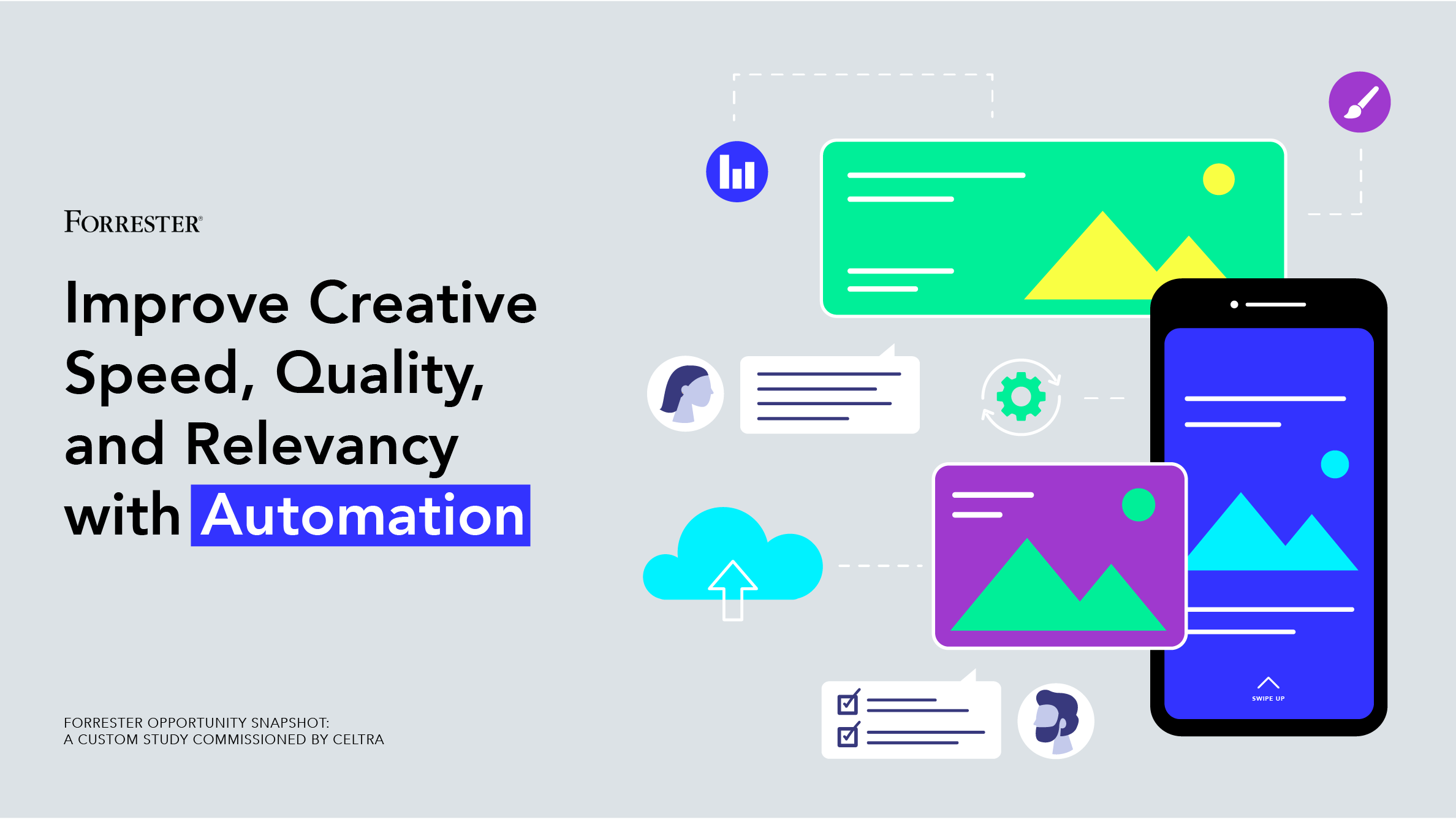Connectivity has changed everything about the way we live. Consumers are empowered and expect seamless experiences from brands at all times. Always-on means there is a need for more creative content than ever before. This creates immense pressure for marketers whose budgets and resources often fail to keep up.
Celtra’s mission is to close the Content Gap created by this reality. In doing so, it’s important for us to identify all of the factors that hinder brands from producing the volume of content they need for success.
That’s why Celtra enlisted Forrester Consulting to conduct a study about the current state of digital creative, with a focus on the technology, workflow, and process obstacles most brands are currently facing. Their research involved 224 marketing decision makers in the US and UK and was executed in December 2019. Overall, they found that marketers are dealing with a variety of challenges stemming from inefficient and outdated creative production.
You can access the full study here.
Let’s take a closer look at the most significant findings.
Brands struggle to keep up with speed, efficiency, and relevancy
With the abundance of digital channels, formats, and platforms, the only way to consistently deliver personalized content is to create more of it. Likewise, the Forrester study revealed that 70% of marketers spend more time creating digital advertising content than they’d like — a huge sign that greater efficiency is needed across the board.
It’s also notable that when asked about their digital advertising creative goal over the next year, 61% reported it was improving creative relevancy while 58% said improving process and workflow efficiency in creative. The third leading response was scaling creative output without increasing production costs (55%). Collectively, this shows a struggle to attain satisfying levels of 1. Speed, 2. Efficiency, and 3. Relevancy.
What’s preventing brands from getting there?
Technology and processes are the main culprits
Achieving creative production goals is a complex problem. What the Forrester study revealed was that both technology and processes are posing major challenges. For instance, 80% reported that their digital advertising strategy could benefit from improved creative technology. Plus, less than half of organizations have the creative processes in place to create digital advertising content.
When asked what capabilities would be most useful in creating/scaling digital advertising content, 42% responded that a cohesive platform to track production, operations, and performance. Runner up was creative content that adapts based on data (35%). There’s certainly a disparity between what brands want and the tools and capacities they currently have at hand to actually achieve these goals.
Automation can help ease their pain points
Through uncovering the main technology and process obstacles, it appears that automation is the best solution for improving creative production. Brands agreed as 77% reported that they could benefit from a more automated digital advertising strategy.
Ultimately, the message is clear — it’s time for brands to change their creative production. It’s not an easy venture, but the most effective, long-lasting, and quickest way to get there is through integrating automation. Automation opens up a variety of new possibilities while ensuring the highest level of efficiency throughout the creative production process.
To view the full study, please visit our page.
Read more in the official press release.

